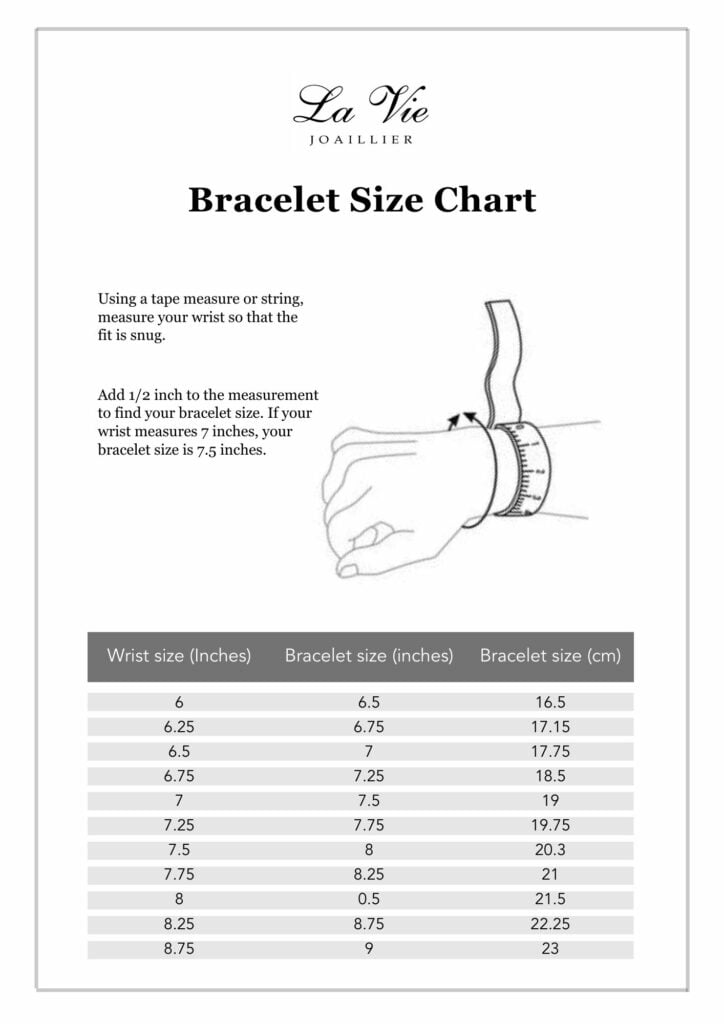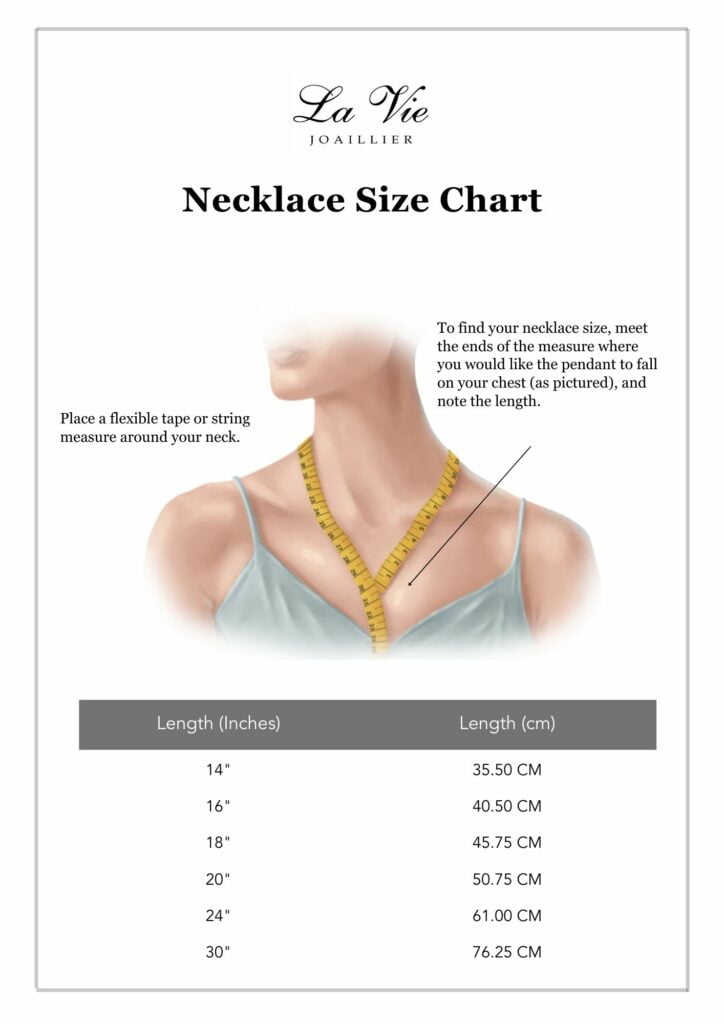
Find Your Ring Size
1. Measure an existing ring
If you have a La Vie ring or any other ring that fits you well, measuring it can be a quick way to find your size. Simply measure the internal diameter of the ring in millimeters and match it with the corresponding size in the ring chart.
2. Measure your finger
Another way to find your size is to measure your finger directly. Here's how you can do it:
1. Cut a 6-inch long string or strip of paper.
2. Wrap it snugly around the base of your finger, making sure not to stretch the string.
3. Mark the spot where the string meets and measure the distance with a ruler in millimeters.
4. Match your measurement with the closest circumference in the chart below to find your size.
If you already know your size in a different measurement system, such as Hong Kong size, you can use the conversion chart provided below to find your size. Knowing your size will make ordering in the future a breeze.
1. Cut a 6-inch long string or strip of paper.
2. Wrap it snugly around the base of your finger, making sure not to stretch the string.
3. Mark the spot where the string meets and measure the distance with a ruler in millimeters.
4. Match your measurement with the closest circumference in the chart below to find your size.
If you already know your size in a different measurement system, such as Hong Kong size, you can use the conversion chart provided below to find your size. Knowing your size will make ordering in the future a breeze.
Tips:
- Measure your fingers when they are at a normal room temperature. This can help prevent any changes in finger size due to weather or other factors that might skew the measurement.
- If you find that you fall between sizes, it's usually best to err on the side of caution and order the larger size. It's easier to resize a ring that's too big than one that's too small.
- Remember that this guide is meant to serve as a reference only, and if you have any doubts or questions about finding the right ring size, don't hesitate to contact customer service for assistance.
- If you find that you fall between sizes, it's usually best to err on the side of caution and order the larger size. It's easier to resize a ring that's too big than one that's too small.
- Remember that this guide is meant to serve as a reference only, and if you have any doubts or questions about finding the right ring size, don't hesitate to contact customer service for assistance.
Find Your Bracelet Size
1. Measure an existing bracelet
If you have a bracelet or bangle that fits you well, you can use it to find your size. Here's how:
1. Lay the bracelet flat and measure the distance from the clasp to the end of the bracelet in inches.
2. To ensure a comfortable fit, add half an inch to your measurement. You can adjust this up or down by half an inch depending on whether you prefer a looser or tighter fit.
3. Choose the size that's closest to your measurement.
1. Lay the bracelet flat and measure the distance from the clasp to the end of the bracelet in inches.
2. To ensure a comfortable fit, add half an inch to your measurement. You can adjust this up or down by half an inch depending on whether you prefer a looser or tighter fit.
3. Choose the size that's closest to your measurement.
2. Use a tape
If you have a measuring tape at home, you can use it to measure your wrist directly:
1. Find a flexible measuring tape with inches or centimeters on its ruler.
2. Wrap the tape around your wrist where you'd like the bracelet to sit, making sure it's snug but not too tight.
3. Note the number that meets your starting point at 0 on the tape, and measure the distance in inches or centimeters.
4. Choose the size that's closest to your measurement. Bracelets are measured in inches, while bangles are measured in centimeters.
1. Find a flexible measuring tape with inches or centimeters on its ruler.
2. Wrap the tape around your wrist where you'd like the bracelet to sit, making sure it's snug but not too tight.
3. Note the number that meets your starting point at 0 on the tape, and measure the distance in inches or centimeters.
4. Choose the size that's closest to your measurement. Bracelets are measured in inches, while bangles are measured in centimeters.


Find Your Necklace Size
1. Length of necklace
- Vary the lengths of your necklaces to create a smooth, cascading effect. This will help each necklace stand out.
- Short necklaces are called chokers and are worn tightly around the neck. They typically range in length from 29 to 42 cm.
- For the second layer, choose necklaces of medium length, between 40 and 45 cm.
- Finally, for the third layer, opt for a necklace between 50 and 60 cm in length.
Remember, when layering necklaces, there are no hard and fast rules. Experiment with different combinations of lengths and styles to create a look that feels uniquely you.
- Short necklaces are called chokers and are worn tightly around the neck. They typically range in length from 29 to 42 cm.
- For the second layer, choose necklaces of medium length, between 40 and 45 cm.
- Finally, for the third layer, opt for a necklace between 50 and 60 cm in length.
Remember, when layering necklaces, there are no hard and fast rules. Experiment with different combinations of lengths and styles to create a look that feels uniquely you.
